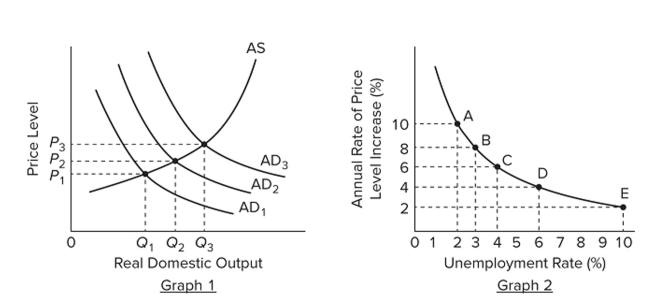Multiple Choice
 Refer to the graphs. Assume that the economy is initially at equilibrium where AD and AS intersect
Refer to the graphs. Assume that the economy is initially at equilibrium where AD and AS intersect
In Graph 1, and also assume that the economy is initially at point C in Graph 2. A movement from
Point C to point B in graph 2 would most likely be associated, in graph 1, with a shift of
A) AD to the right.
B) AD to the left.
C) AS to the right.
D) AS to the left.
Correct Answer:

Verified
Correct Answer:
Verified
Q192: <img src="https://d2lvgg3v3hfg70.cloudfront.net/TB8601/.jpg" alt=" A)
Q193: If the government adopts a hands-off policy
Q194: Disinflation can be explained by the Phillips
Q195: The Romer and Romer paper, "The Macroeconomic
Q196: <img src="https://d2lvgg3v3hfg70.cloudfront.net/TB34225555/.jpg" alt=" Refer
Q198: <img src="https://d2lvgg3v3hfg70.cloudfront.net/TB8601/.jpg" alt=" Refer to the
Q199: Consider the following national data: tax revenues
Q200: <img src="https://d2lvgg3v3hfg70.cloudfront.net/TB8601/.jpg" alt=" Refer to the
Q201: <img src="https://d2lvgg3v3hfg70.cloudfront.net/TB8601/.jpg" alt=" Refer to the
Q202: Stagflation refers to<br>A) an increase in inflation